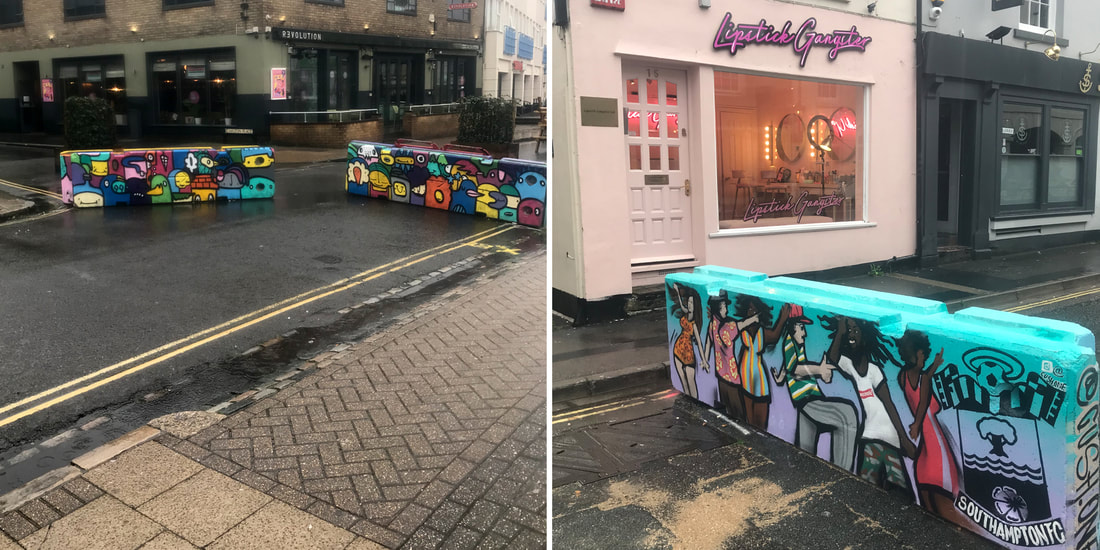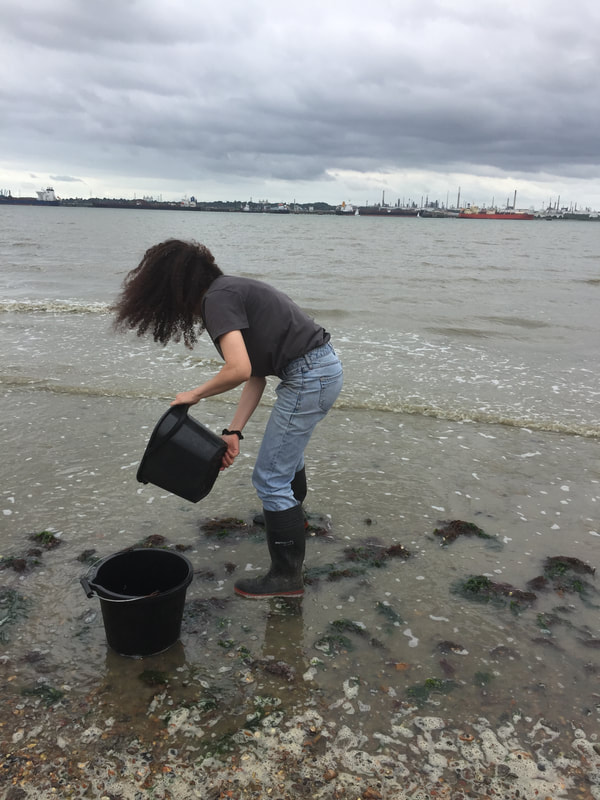|
CREDIT: Photo taken at Bedford Place, Southampton, of artist decorated road closure blockades, but what now happens behind?: Amanda Moore Since the pandemic started early this year, people have been forced to become more ‘local’. Working from home, (which I’ve now been doing for 9 months), no distant holidays, less inessential travel. Strangely, there have been some potential upsides to this new way of living which could point the path to a more permanent way of simplifying our lives and making us more rooted in our local environment, for the better. For myself, being housebound has made me more appreciative of my home and garden space and forced me to look at ways of optimising small areas of space. I’ve created a reading nook in the hallway and densified storage, as a posed to thinking about extending or buying a bigger home. I’ve gotten to know my neighbours better, we’ve set up benches in our driveways and had lunchtime coffees. I’ve cycled around during the one hour of government-approved daily exercise to scope out parks and woodland cycle routes I didn’t know about and people seemed to make more eye contact and smile more that usual during the summer, enjoying any level of human contact. Within town centres, some roads were closed in order to allow shops and cafes the opportunity to spread out into the streets due to restrictions on internal occupancy. In my own town, the two main Victorian streets have been closed since July which has not only removed the traffic, but also the linear barricades formed from parked cars which prevented people moving from one side of the street to the other in a more organic way. Both streets are served by back alleyways in any case and there is nearby accessible parking. The last few months of reduced car access has likely had little effect on trade, more the ‘inessential trade’ restrictions or general increase in online shopping pre-COVID. However, the streets have had an eerie silence where the white and yellow road markings remain and people are still not used to waking down the middle of the streets. This is an opportunity though, to rethink whether cars should be allowed into every street of our small town centres, making way for people to have a slower and more friendly retail experience, meandering down streets rather than driving to a shop and leaving, or driving out of town to bigger malls and hyper markets. Using the streets between shops as pop-up markets, weaving a garden through the town, having additional seating or events spaces sits in line with a retail ‘experience’ which has more physical interaction and connection with our local towns, and ties in with encouraging less car use and carbon reduction. CREDIT: Photo, Romsey Parklet: Mill Road Summer Architects, designers and planners should be starting with the smaller traditions and rituals of each community such as yearly events, or seeking out local makers and performers who could benefit from having a public platform. Asking people what they want and making temporary and flexible interventions in line with those potential users, introducing a new use for road and parking spaces so that people can see the benefits and feed in ideas. A bottom-up approach rather than a top-down one which usually involves building large permanent interventions without ensuring that people are actually going to use them.
I currently have the opportunity of working with teams on a couple of these town centre projects, walking the streets and talking to local traders and groups about how to make the space around their business or studio more of a transitionary zone, ie; a parklet in front of a restaurant, a selling space in front of a workshop, a market stall for traders who sell in several towns, an activity or event space for local school or theatre groups ... all of this making the market street potentially more of an experience which draws people in as an alternative to online or out of town shopping... Go [or stay] local.
0 Comments
Your comment will be posted after it is approved.
Leave a Reply. |
AuthorWhat am I doing here? I'm collecting sea water to fill 1,000 bottles and hang them from a scaffold inside an old ruin. Why? Why not? Archives
December 2023
Categories
All
|




 RSS Feed
RSS Feed